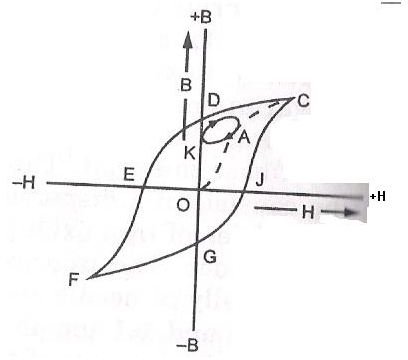How do Tape Recorders Work? Advantages of Magnetic Tape Systems
Introduction
In our previous article, we studied about how tape recorders work and looked into the working of the old styled magnetic tape recorders. We will proceed further but before we take a look at the modern digital tape recorders, I would like to say something regarding the scientific principle of magnetic recording, since we only studied the mechanical arrangement and broad outline in the last article.
Principle Behind Magnetic Recording - Hysteresis Loop
Those of you who have studied physics must surely remember that there are two things namely a permanent magnet and a temporary magnet. In a temporary magnet, the magnetism is induced as a result of some force which aligns the magnetic particles along a specific axis. This force could be due to rubbing of another magnetic material or an electromagnetic field applied using a varying current.
I will go a bit deeper and you can take a look at the typical magnetization curve below which shows the graph of magnetizing force H against the flux density B. When a material is in purely non-magnetized state and a magnetizing force is applied, the flux density rises along the dotted line OAC. But now if the current is brought to zero, the flux does not reduce to zero but a residual flux remains and the current has to be extended into the negative region (opposite direction) to bring B to zero again.
Hence a loop is formed of the overall process as can be seen from the diagram and this is known as the magnetization curve for the material or is also known as the hysteresis loop. Now this property may be undesirable in several situations but here you can intuitively imagine a great use for the same. Once the signal is applied to the magnetic tape via the recording head, the section of the tape gets magnetized in accordance with the signal which leaves a residual flux on the tape. This acts to store that signal on the tape which can be played back using the playback head.
Benefits of Magnetic Recording
Now we will take a look at some of the advantages and drawbacks of the magnetic tape systems.
-
The frequency range of the signals stored on the tape has a very wide range and spectrum, and an equally good dynamic range.
-
There is very less distortion of signals stored on the tape. This is specifically useful for audio/video purposes
-
Tapes can be used to store multiple signals along the same length thus increasing efficiency.
-
Even though you might think that electronic memories are getting cheaper, the tape still is a winner in terms of cost per bit of storage. This is mainly due to large surface area of the tape and very high data density
-
Time base of the stored signal data can be varied as per requirement. This means that signals recorded at fast speed can be played back a slower speed and vice versa, which is useful in several applications
There are several types of recording techniques which are used for recording on magnetic tapes and these can be
- Direct Recording
- Frequency Modulation Recording
- Pulse Duration Modulation Recording
- Digital Recording
We will take a look at all these methods of recording on magnetic tapes in a separate article.
